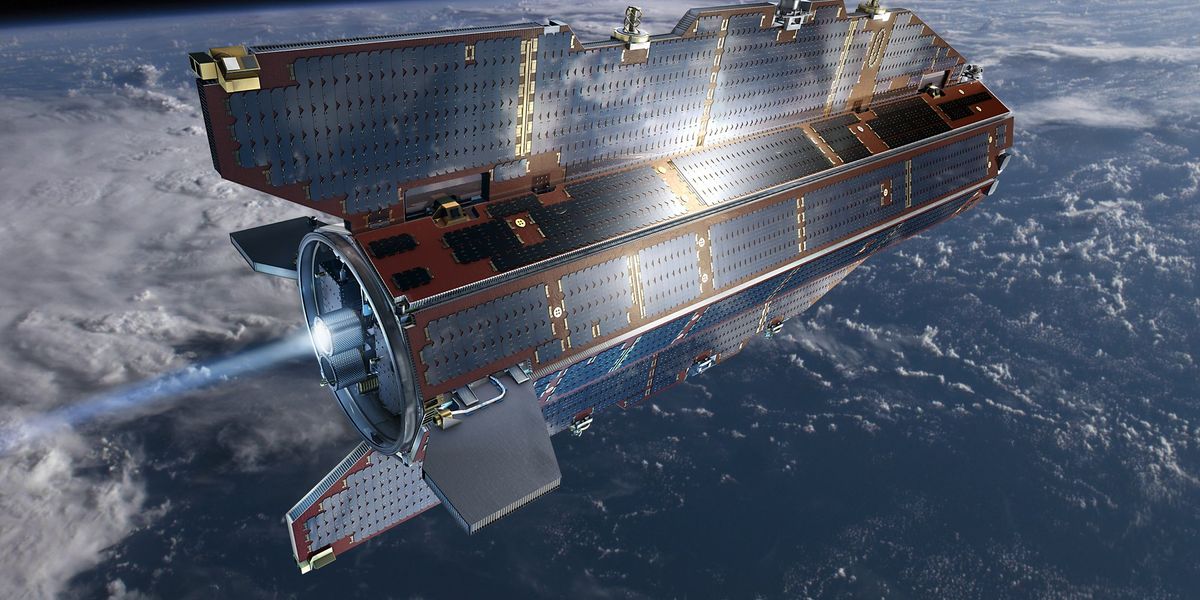The first commercial very low-Earth orbit (VLEO) satellite will probably launch before the end of December, depending on how things go at China Aerospace Science and Industry Corporation (CASIC) and EOI Space. Both companies claim they are leading the way on an over-the-horizon idea that will bring satellites more down-to-Earth than today’s fast-growing low Earth orbit (LEO) satellite constellation.
VLEO refers to orbits between about 100 kilometers and 300 or 400 km (although the exact range depends on who you ask), in contrast to LEO, which starts around 300 or 400 km and extends up to 2,000 km. The first satellites in VLEO were short-lived US spy satellites in the 1960s and 1970s, which dropped their film payloads for mid-air capture by aircraft. It’s probable that their descendants are still dipping into VLEO.
Outside of the world of espionage, the European Space Agency (ESA) operated a satellite in VLEO from 2009 to 2013, the Japanese Aerospace Exploration Agency’s (JAXA’s) Super-Low Altitude Test Satellite set a record for the lowest orbit in 2017, and the European Union flew a VLEO tech testbed for 9 months in 2021 and 2022. Not until now, however, have businesses bet that the future of satellites will include very low orbiters.
“We are convinced that this part of space will be very important in the near future, for scientific applications and also for commercial applications.”
—Stefanos Fasoulas, University of Stuttgart
“The telecoms industry is quite interested in VLEO, particularly for its low latency,” says Russell Hills, a space systems engineer at Thales Alenia Space in Bristol, in the United Kingdom. Hills was involved in a study that found advantages for telecoms satellites in orbits of about 250 km. “You need thousands of satellites, and several years ago that would have been ridiculous, but now that’s not the case,” he says. The same falling costs for production and launch that have enabled three years of record numbers of orbital launches make it feasible for companies to consider huge constellations of VLEO satellites.
VLEO satellites could allow scientists to make not just sharper measurements of the Earth, but also new kinds of measurements, such as mapping the makeup of the atmosphere at their altitude and how it changes over time. Telecoms companies will be able to shift some of their ground-based cellular and emerging LEO-based cellular infrastructure into VLEO. Additionally, VLEO has less harmful radiation than higher orbits, making it possible to use cheaper equipment, among other advantages.
All that very low orbiting fruit is getting attention from research agencies. The U.S. Defense Advance Research Projects Agency (DARPA) is offering to pay for research on VLEO satellites with “air-breathing” propulsion technologies, and in October the ESA requested new ideas for VLEO applications.
CASIC plans 300 such satellites by 2030, according to Space News. Keeping them in VLEO will require almost…
Read full article: Civilian Satellites Descend Into Very Low Earth Orbit

The post “Civilian Satellites Descend Into Very Low Earth Orbit” by Lucas Laursen was published on 12/14/2023 by spectrum.ieee.org




































